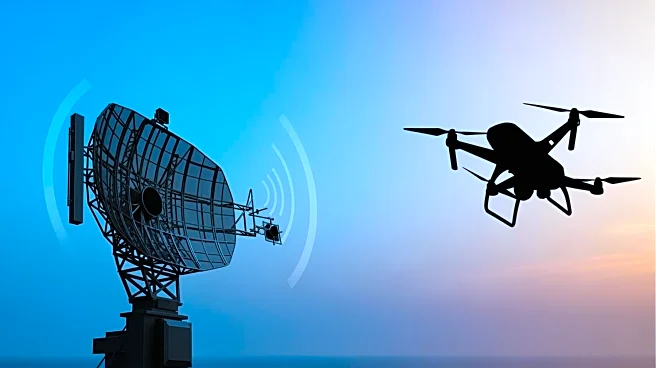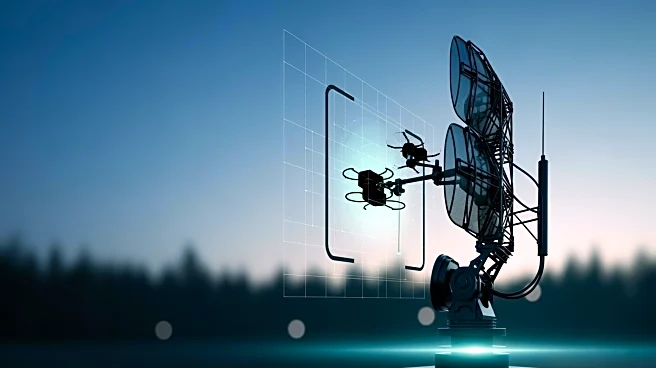What's Happening?
The U.S. Army is extending its counter-drone experimentation efforts from Europe to the Indo-Pacific region. Recently, Polish, Romanian, and American troops conducted joint training in Poland using the Merops
system, which employs AI to identify and neutralize enemy drones. Concurrently, Operation Flytrap 4.5 was held in Germany, featuring a competition among 20 counter-unmanned aerial systems (cUAS) contenders. Brig. Gen. Curt King highlighted the cost-effectiveness of the Merops system, which uses interceptor drones priced at $15,000, significantly cheaper than traditional air defense missiles. The Global Tactical Edge Acquisition Directorate (GTEAD) plans to create a marketplace for vetted systems, expanding operations to Indo-Pacific Command next year. This initiative aims to support U.S. units and international partners in Australia, South Korea, and Japan.
Why It's Important?
The expansion of counter-drone capabilities to the Indo-Pacific region is crucial for enhancing U.S. military readiness and strengthening alliances in a strategically significant area. The cost-effective Merops system offers a practical solution to counter drone threats, which are increasingly prevalent in modern warfare. By integrating advanced technology and fostering international collaboration, the U.S. Army aims to bolster defense capabilities against evolving threats. This move also reflects a shift towards more autonomous and efficient military operations, reducing reliance on expensive traditional systems. The initiative could lead to increased security cooperation and technological exchange among Indo-Pacific allies, reinforcing regional stability.
What's Next?
The U.S. Army plans to replicate its counter-drone experimentation processes in the Indo-Pacific region early next year. The GTEAD will continue to lead assessments and provide feedback to refine systems before they are made available in the marketplace. This expansion will involve collaboration with international partners, including Australia, South Korea, and Japan, to enhance regional defense capabilities. The focus will also shift towards developing ground autonomy and air-launched effects, aiming to create strategic dilemmas for adversaries. The initiative is expected to attract investment and contracts for companies involved in developing these technologies.













